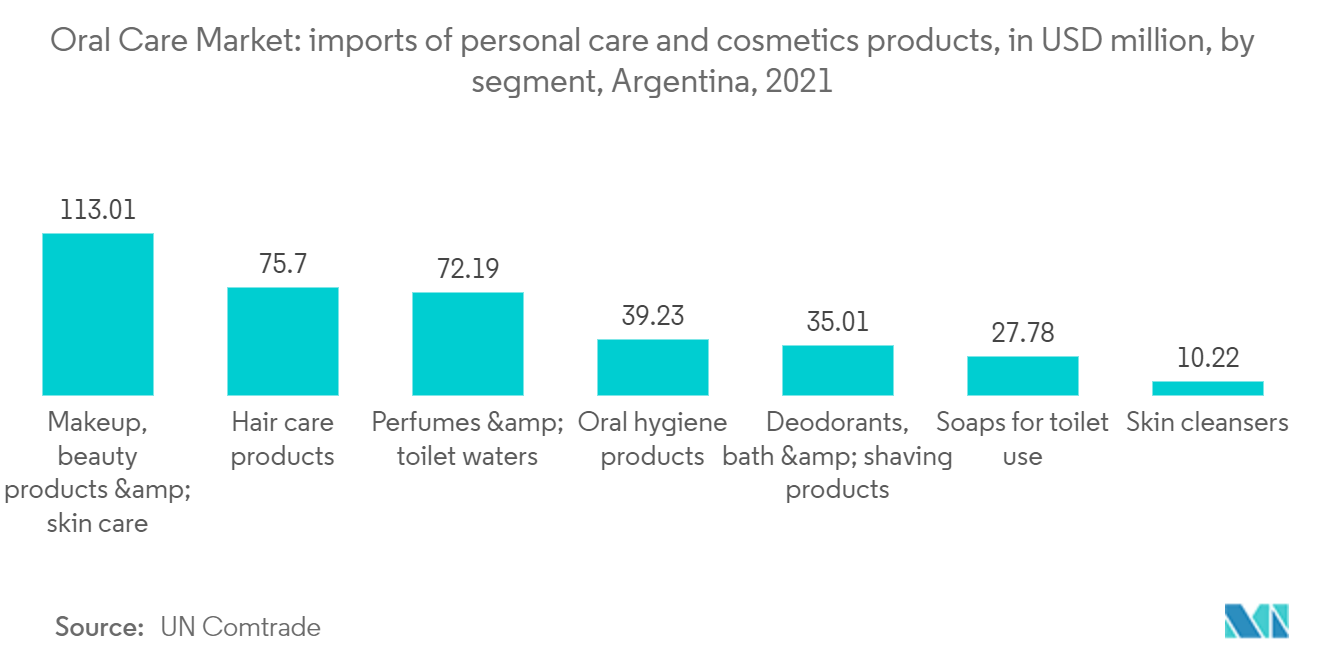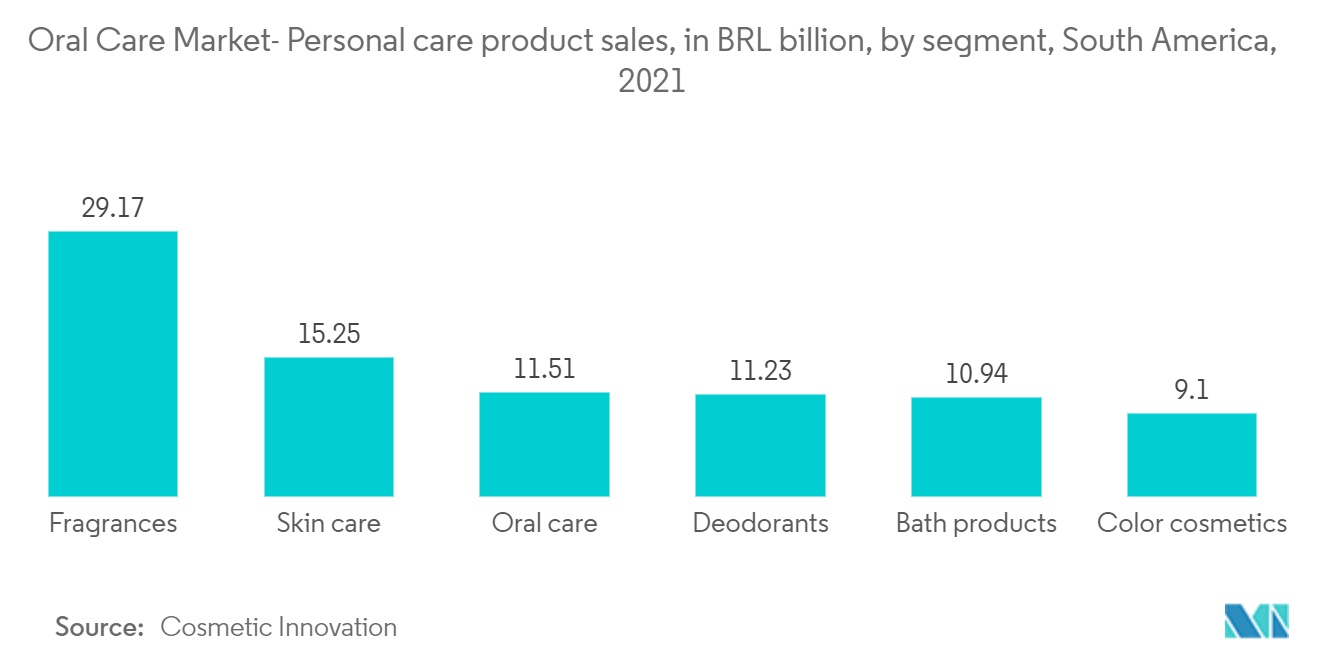Market Trends of South America Oral Care Industry
Increased Demand for New and Innovative Oral Care Products
Various healthcare professionals in the country suggest using oral care products that are natural or organic. Demand for natural and organic oral care products is growing, owing to the side effects of using chemical-rich toothpaste. Awareness among consumers about the use of toothpaste with chemical ingredients in them is leading the market players to use organic and natural sources. Market players are focused on developing new and innovative oral care products with the help of research and development (R&D). Consumers across South America are highly conscious of their oral health. Key players in the sensitivity or pain relief Toothpaste and mouthwash market, such as GlaxoSmithKline Brasil Ltd, are focusing on bringing new products to the retail shelves and are considering investing in offering innovative packaging with eco-friendly options in the related market with interesting innovations like authentic, traditional, enrichment and attractive packaging, thus contributing toward the market demand backed by market growth. Moreover, markets such as Colombia, Nicaragua, Peru, Uruguay, Paraguay, and Costa Rica have been showing a significant increase in value in the rest of the Latin American market.

Brazil Dominates the Regional Market
Many manufacturers are attracted to the overall market and strategically plan business expansions and partner with small manufacturers to increase market penetration by strengthening product distribution. Corporate giants such as Colgate-Palmolive Company, Procter & Gamble Company, etc., introduced many innovative products that helped prevent COVID-19 and other competitive supplementary goods last year. Moreover, key players are heavily investing in research and development (R&D) and are working to introduce technologically advanced oral care products, such as electric toothbrushes.
Brazilians were more susceptible to halitosis as a result of prolonged mandated mask use during the pandemic, which prompted consumers, especially those in higher socioeconomic levels, to examine their hygiene and self-care practices and adopt a wider selection of oral hygiene products. Through the National Oral Health Policy, the Brazilian Unified Health System (SUS), which is guided by the doctrinal concepts of universal access, comprehensiveness, and equality of care, provides free dental care to Brazilians of all ages (NOHP). The Smiling Brazil policy aims to ensure that Brazilians have access to an oral healthcare network for the promotion, prevention, and restoration of oral health. Family health units (FHU), health units, and mobile dental units (MDU) provide primary care; CEOs (network of specialized Dental Specialties Centers) provide secondary care; and hospitals provide tertiary care. These policies drive the Brazilian oral care market.

